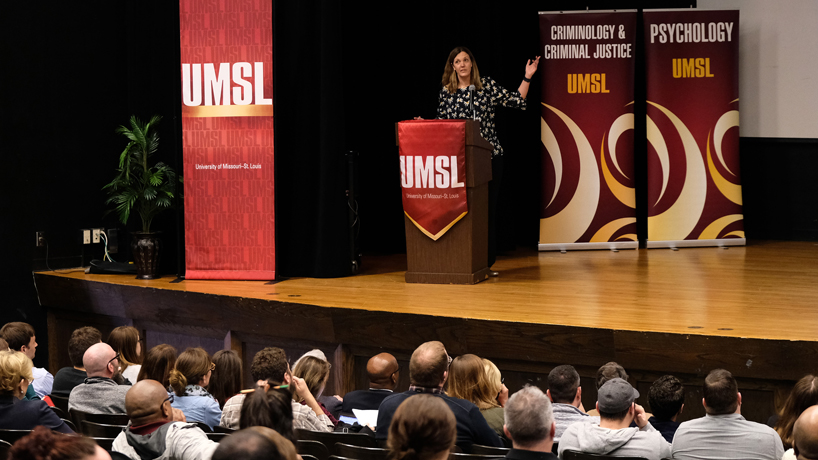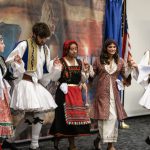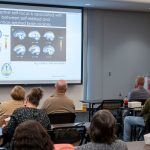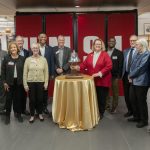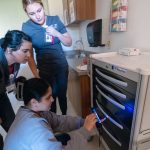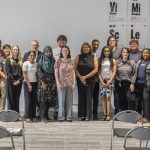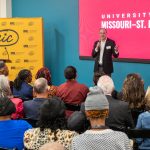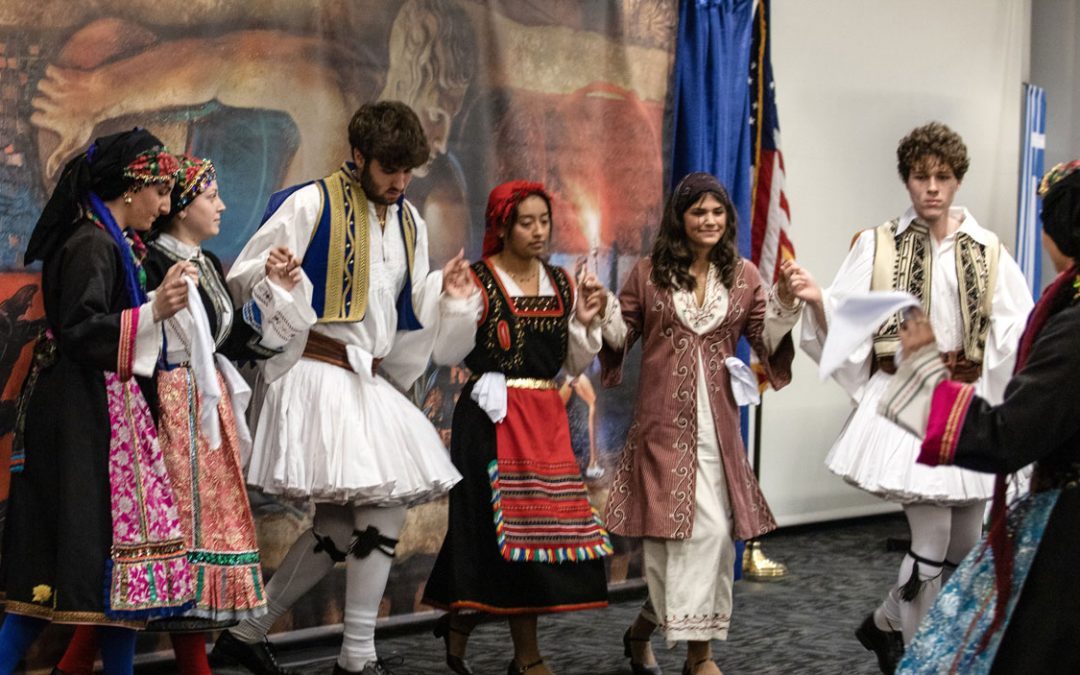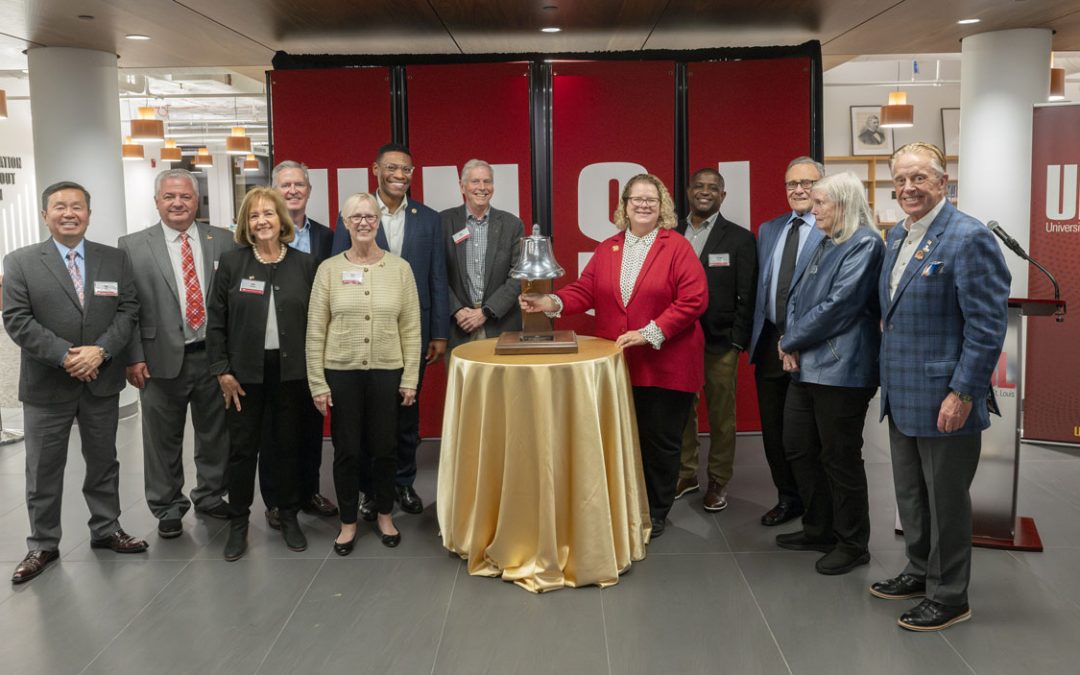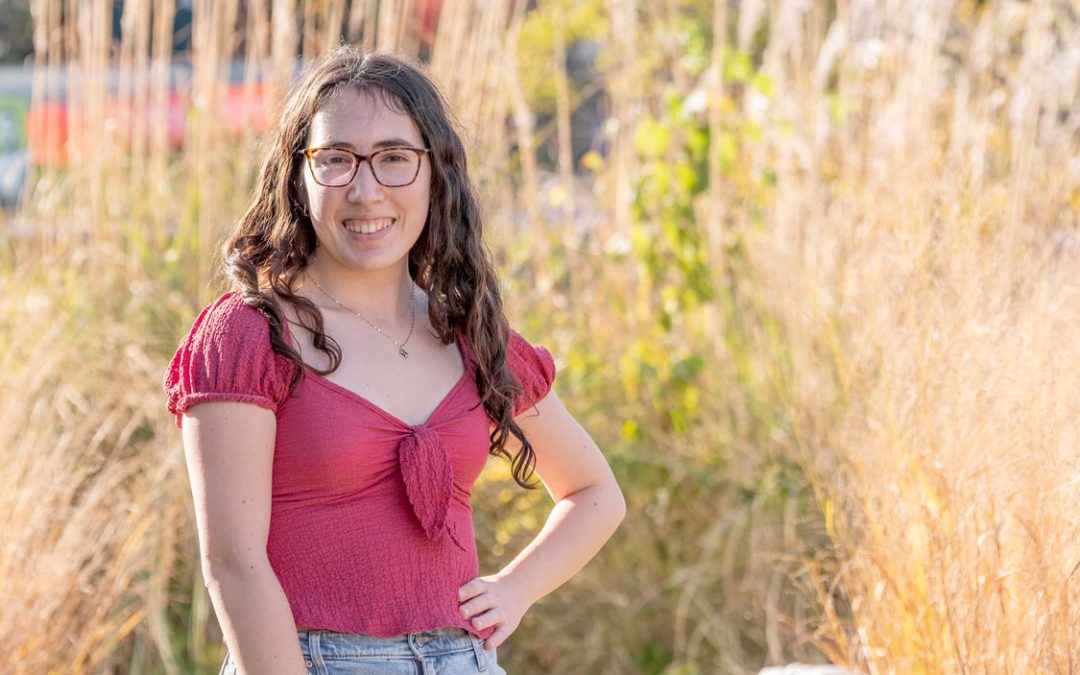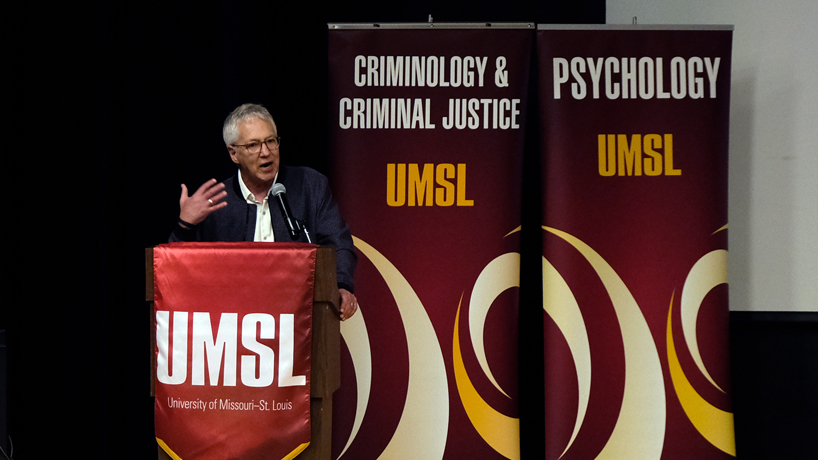
Richard Rosenfeld, the Thomas Jefferson Professor of Criminology and Criminal Justice at UMSL, delivers comments on a presentation Temple University psychologist Michael McCloskey gave on “Emotions and Gun Violence” during the second day of the 2017 Youth Violence Prevention Conference. The 16th annual event provided a multidisciplinary look at the problem of gun violence in American cities. (Photos by August Jennewein)
The crowd was still filing back into the J.C. Penney Auditorium after a break last Thursday in the 16th annual Youth Violence Prevention Conference as Finn Esbensen prepared to introduce the morning’s second speaker.
First came a quick story.
Esbensen, the chair of the Department of Criminology and Criminal Justice at the University of Missouri–St. Louis and a self-proclaimed “country boy,” told the audience about a night last fall when he found his cat lying dead outside his rural house in Lincoln County. It had been killed by a pack of dogs.
Esbensen buried the cat and the next morning contacted the local sheriff’s department to complain about the dogs. A dispatcher transferred him to a patrol officer, whose first question for Esbensen caught the professor off guard: “Got a gun?”
He shared that tale to highlight just how entrenched firearms are in American society – viewed by many as a solution, not a problem.
This year’s conference on “Gun Violence: Myths, Realities and Responses” in particular aimed to examine their prevalence and usage in high-crime parts of the nation’s cities.
The past three years have brought a spike in homicides in several of those urban areas, with a significant amount of media coverage devoted to the killings that have occurred in Chicago, largely with guns.
The conference brought together the perspectives of criminologists, criminal justice practitioners and also psychologists – including John Nanney, director of the Community Psychological Service at UMSL, and Rachel Wamser-Nanney, from UMSL’s Center for Trauma Recovery – in the type of discussion they all hope might eventually lead to some solutions.
“I think a major highlight for me of the conference was getting those three groups of people in the same room with one another, who don’t always get to talk,” said Ted Lentz, one of the many students who attended the conference. “It’s helpful to see different viewpoints and different ways of looking at things.”
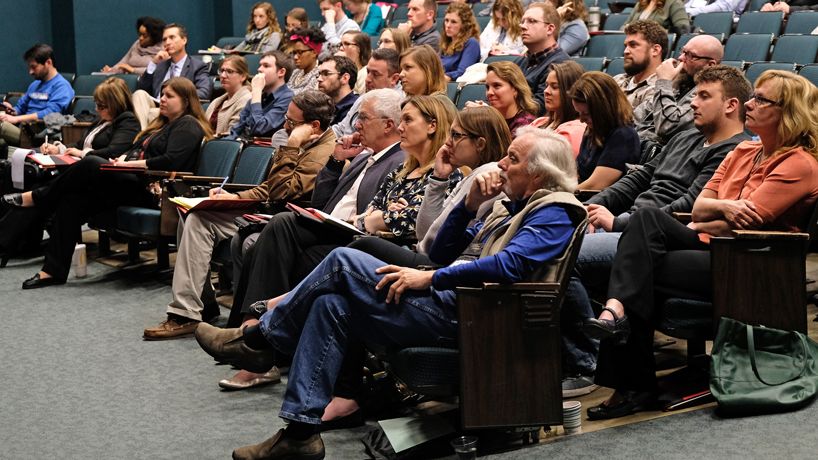
Attendees at this year’s conference included teachers, counselors, public health workers, law enforcement officers and other professionals working with at-risk youth. Some came from as far away as New York, Florida and Kentucky.
UMSL criminologists played prominent roles throughout the two-day event.
Richard Rosenfeld, a Thomas Jefferson professor, began the proceedings Thursday morning with a look at trends in gun violence in St. Louis and showed how those trends often mirror what’s happening in other American cities.
His presentation plainly laid out some facts for an audience that included not only students but also teachers, counselors, public health workers, law enforcement officers and other professionals working with at-risk youth from around Missouri and as far away as New York, Florida and Kentucky. Among the facts are that instances of gun violence are unevenly and unequally distributed throughout city neighborhoods and that young African American men are overrepresented, both as perpetrators and as victims, in crime data.
UMSL professors Janet Lauritsen and Beth Huebner also took turns behind the lectern before the two-day event concluded. Lauritsen, a Curators’ Distinguished Professor of Criminology and Criminal Justice, presented on “Survey Evidence on Gun Use in Crime” while her colleague Huebner shared a paper on the topic of gangs and gun violence.
“As a criminology student, I’m really aware of how well-known our faculty are and some of the great work that they do, so it was really exciting to watch them present in front of the UMSL community and practitioners,” doctoral student Kristina Garrity said.
But they shared the stage with prominent scholars from around the country.
“This is like nerd life for criminology students,” Garrity said. “Andy Papachristos, Charis Kubrin, Darnell Hawkins – they’re all legends and rock stars in the field right now. It was cool to see them.”
Hawkins, professor emeritus of African-American Studies, Sociology and Criminal Justice at the University of Illinois at Chicago, shared further insight into the role race plays in the societal response to violence, including the treatment of different types of guns.
Papachristos, an associate professor of sociology at Yale University, talked about his research on social networks – not Facebook and Twitter, but the interconnectedness of both perpetrators and victims that helps perpetuate the cycle of gun violence.
“Networks are extremely powerful for affecting human social behavior,” Papachristos said. “I actually think they can help us understand gun violence, and in fact, understand the decidedly nonrandom nature of gun violence.”
He referred specifically about the shooting of infant Jonlyah Watkins, who was killed while getting her diaper changed in a parked minivan in 2013. The shooting happened in Chicago but attracted national headlines.
Papachristos described how it was not the random act that it initially might have seemed because her father, the intended target, was a member of a gang and that the shooting was in retaliation for a stolen video game console. That network connection, his research suggests, increased Watkins’ risk of becoming a victim.
Kubrin, a professor of criminology, law and society at the University of California, Irvine, took the discussion in a new direction Thursday afternoon when she presented about guns and rap music.
“She was content analyzing rap lyrics, so it makes for a nontraditional type of presentation,” said Lentz, who enrolled in UMSL’s doctoral program last fall. “It almost brought a fourth viewpoint – that of the people that are actually experiencing or are either victims or perpetrators of gun violence. She kind of explained that rap music was a way for them to tell their side of the story.”
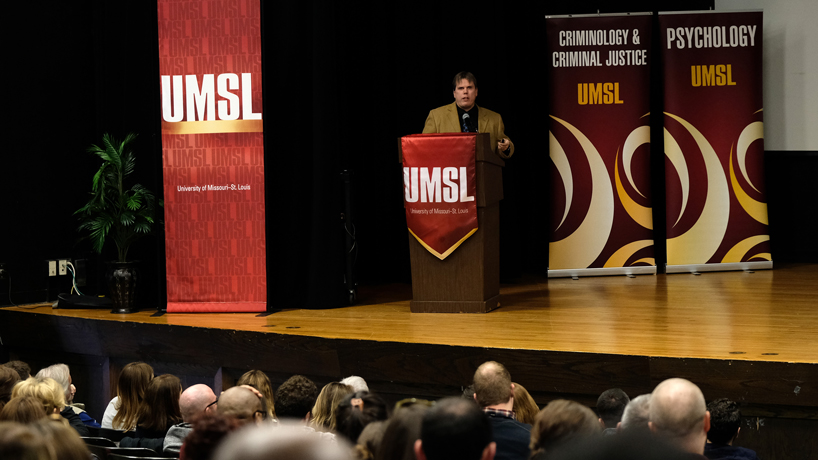
Temple University psychologist Michael McCloskey was among the national experts to present during the two-day event.
Other scholars who spoke included Joseph Constans, a professor of psychology and neurology at Tulane University, and Michael McCloskey, an associate professor of clinical psychology at Temple University. Their presentations, and that of Nanney and Wamser-Nanney, helped steer the conversation beyond broader trends to a consideration of the circumstances of individual perpetrators and victims.
Friday’s sessions, including a presentation by McCloskey on emotions and gun violence, built in time for prepared comments from scholars from other disciplines.
“I think we need more of it,” Garrity said. “I think there are definitely things that sociologists and psychologists disagree on, but to try and keep them in their separate sort of silos has not been helpful for research and society more generally. It was kind of fun to see some disagreement and pushback, but all very respectful. I thought it was great.”

